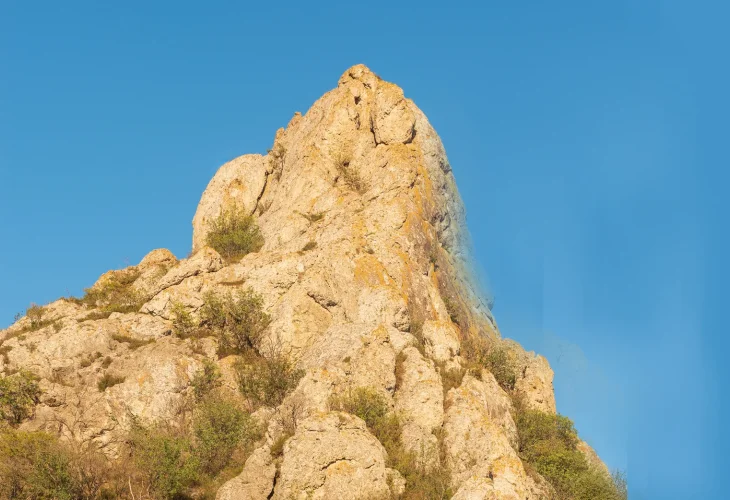Discoveries on Mount Ebal: Could This Be Joshua's Altar?
The issue isn't the absence of discoveries—there are certainly findings. The problem arises when these findings are met with silence and ignored. This is the story of the altar on Mount Ebal.
 (Photo: shutterstock)
(Photo: shutterstock)Mount Ebal is one of the highest peaks in Samaria, towering at 940 meters. It offers a commanding view over the city of Shechem and Mount Gerizim. But Mount Ebal is more than just an impressive mountain; it is the site of one of the most significant events in the history of the Israelites. After crossing the Jordan, the Israelites gathered between Mount Gerizim and Mount Ebal, where they inscribed the Torah onto large stones, built an altar, and offered sacrifices. There, the Levites recited blessings and curses to the people, with six tribes standing on Mount Ebal and the other six on Mount Gerizim. After each blessing and curse, the people responded with 'Amen.'
The ceremony at Mount Gerizim and Mount Ebal represents a renewal or continuation of the covenant made in the Plains of Moab, before the Israelites settled in the land, to begin their settlement with a deep spiritual connection to the role of the people of Israel.
One of the common claims of biblical skeptics is the alleged lack of evidence. If you ask them whether the Israelites could have entered the land in the 13th century BCE, they will say it is impossible. A new nation's entry into a new land would have required material signs of a new culture, signs of local cultural conquest, and cultic sites, among other things. But unfortunately, they claim, there is insufficient evidence to support this story.
The issue isn't the absence of discoveries—there are indeed findings. The problem arises when these findings are met with complete silence and ignored. Such is the case with the altar on Mount Ebal.
As part of an extensive archaeological survey in Samaria conducted by the late archaeologist Adam Zertal, he identified a square structure on the eastern shoulder of Mount Ebal. Using the pottery and ceramics found at the site, Adam Zertal dated the structure to around 1300 BCE, approximately the time of the Israelites' entrance into the land.
The structure was built with unhewn stones, meaning stones that were not shaped into bricks but were used as they were, in their natural form. This corresponds with the biblical commandment for the Israelites to build an altar on Mount Ebal: "And you shall build there an altar to Hashem your God, an altar of stones; you shall not raise any iron upon them. You shall build the altar of Hashem your God with whole stones and offer upon it burnt offerings to Hashem your God."
The square structure had a ramp rather than stairs, which aligns with the scripture: "And you shall not go up by steps to My altar that your nakedness may not be exposed on it." Next to the main ramp is a smaller ramp, which connects with a kind of embankment allowing passage around the altar, fitting the "circuit" mentioned in the Mishnah.
The site revealed many animal bones, all from kosher animals. A significant portion of these bones belonged to male yearlings, suitable for sacrifice.
The entire site was buried in soil, consistent with what we know from the times of Hezekiah and Josiah when Israelite altars outside Jerusalem were concealed. No idols were found at the site, distinguishing it from typical Canaanite worship locations.
Based on these findings, Adam Zertal concluded that the structure is Joshua's altar on Mount Ebal. What did the biblical skeptics say, mostly in whispers? Most simply ignored it. Some attempted to argue that the site was an ancient watchtower, though it's unclear what it would have guarded, a theory incompatible with the findings. It seems those resisting Zertal's conclusions weren't attempting to explain the discoveries in detail—they mostly ignored them.
The reluctance and fear among archaeologists concerning the findings on Mount Ebal can be gleaned from a quote by Professor Larry Stager of Harvard University: "If a burnt-offering altar stood on Mount Ebal, the effect on our research would be revolutionary. We would all have to return to kindergarten."
The discoveries on Mount Ebal demonstrate that evidence proving the existence of the Israelites in the land is abundant. All archaeologists need is a bit of courage and professional integrity, and all the findings will be laid before them.

